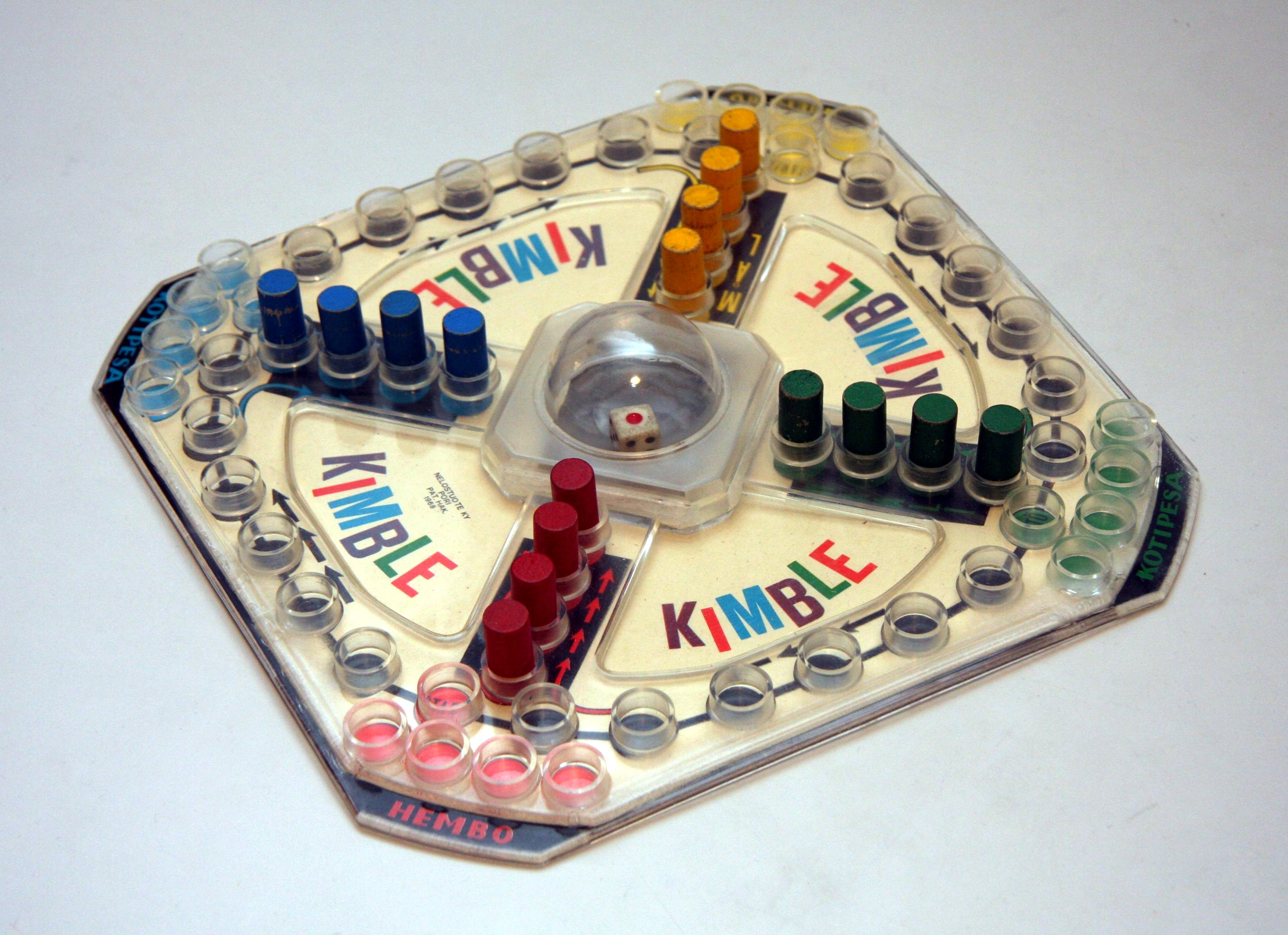
On your first turn, you need to roll a number six to move one of your pegs out of the “Home” section on the board and into the “Start” environment for the playing track.

When everyone has rolled the dice to determine who gets to play first, the game begins, with one pop of the POP-O-MATIC plastic bubble, and one move, if the dice allows it. The proprietary plastic bubble will roll the dice for you, and the person with the highest number will get to go first, with play continuing with the person to their left. To determine who gets to start the game, each player will roll the die by pressing on the POP-O-MATIC plastic dome once and letting go. If only two people are playing, you can decide whether you want to play with two sets of pegs to ramp up the challenge.

To get started, each player in your group will need to choose a color and place the four pegs in that corresponding color into the “Home” section of the board. During the game, you also attempt to send your opponents back home so that they have to start their Trouble journey from scratch. The object of the game is to be the first to move all of your colored pegs across the board and into the “finish line”. Beyond this plastic component, you’ll also get 16 plastic playing pegs in four colors and usually some rubber gameboard feet to keep the board stable while you play. It helps to determine second and third place.The Trouble game from Hasbro comes with one plastic game board featuring the “POP-O-MATIC” die roller – which is the most interesting part of the game.If there are 3 or 4 people playing, you can continue the game after one of them wins.In “Finish” mode, if there is empty space, you can move a block further to the target area, and then scroll the exact number to move the piece to an available position.The pieces will not move again on the board once they have passed through it.So, you don’t have to move any other pieces.If you roll more dice than can be moved, the turn is over and your piece will not move.Moreover, you must spin the demanded number to get the pieces into the vacant finish location/mark.You must be the first player to make all the pieces into the final destination.To win the game, you have to follow the rules of the game.The players can move Pegs within a FINISH area only according to the directions of the arrows and by the exact dice count.The player’s peg cannot be moved to another player’s FINISH LINE.If you can’t and don’t have another peg to move, it’s the next player’s turn.Only when you move to the finish line and land with the EXACT NUMBER in the blank area of FINISH, the peg can enter FINISH.Remember, the peg/piece cannot be bypassed more than once on the board.After moving the peg once across the board, it will hit the FINISH line of the corresponding color.You can also move a peg on the currently playing track.If you scroll 6, you can move the new peg out of the home.Move the peg clockwise along the playing track, and calculate whether each place is empty or full.When throwing the dice, you can move the peg on the play area and track the number of spaces indicated on the dice.While you roll a 6 and can move a piece from “Home” to “Start.”.This incorporates the other contestant’s piece being on your “Start”.In that case your opponent’s piece is set to return to your opponent’s home.Sometimes you’re able to land on a space that has an opponent’s piece.So, you have to count every space you move.
ORIGINAL TROUBLE GAME RULES FREE

The best thing about this game is that it does not have a penalty for rolling multiple 6s in a row.



 0 kommentar(er)
0 kommentar(er)
